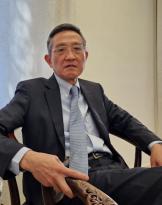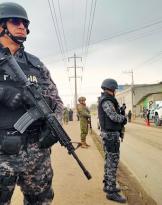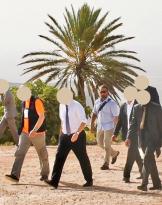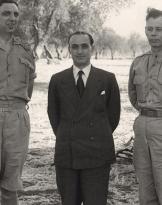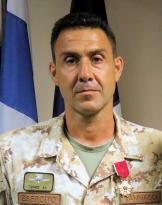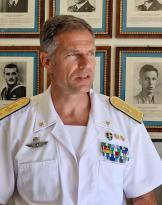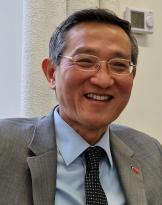The concept of de-briefing, for all the operational levels, it is an essential operation to understand the critical points and the successes of an exercise or a mission and make it treasure for the future. Online Defense wanted to investigate the dynamics that lie behind one of the most complex and articulated multinational exercises in which Italy has recently taken part.
In order for this deepening to have an absolute value, we went to speak directly with those who experienced this experience in person.
La Swift Response 2015 is a multinational exercise that saw all the paratroopers infantry regiments of the paratroop brigade employed thunderbolt and the 4 ° Alpine Paratroopers Regiment.
To date, it stands as the most impressive aircraft activity of the last 70 years, after theMarket Garden operation.
General Iannucci - commander of the paratroop brigade thunderbolt - explains to us what was the path of this project.

The project was born on an American initiative. In particular, the 1st 82 brigade combat teamnd, was designated as the US rapid reaction force, capable of intervening anywhere in the world, as a readily usable unit. Therefore they had to obtain a validation of their readiness for use. The validation gave the US inspiration to involve other paratroopers for a large joint aircraft exercise.
The military leaders of all the countries concerned have therefore been involved, in order to define objectives and an intent of common interest to be achieved.
The Army General Staff therefore entrusted Folgore with the task of taking part in the 2015 Swift Response, representing Italy, together with the 4 ° rgt. Monte Cervino.
As you can imagine it was a very important test for us, perhaps the most important of the whole year.
The exercise took place in four different countries - Bulgaria, Romania, Germany and Italy - with 11 countries involved and about 5.000 men on the ground.
49 airplanes from 5, different nationalities, have also been deployed only for aviation activities and many different types of parachutes have been used simultaneously.
Numbers that we, on our own, on national soil could not afford.
The Swift Response is therefore the result of the American need to test the readiness of its men in the field in the event of real activation.
How did it go from being the validation of a brigade to being the biggest training activity of 2015?
The general points out that "interoperability with other multinational forces, in particular among paratroop units, is very important, even for an army like the American one. This concept of interoperability is the one around which the whole exercise revolves.
Involving so many countries means having wanted to test and realistically test their standards, in terms of training, equipment and procedures.
For us at the Folgore it was a fundamental test, which transcends American validation to become a sort of validation at the national level. We had to show that we are ready and usable even in the context of such a heterogeneous coalition with extremely different structures. And I can say that there are certainly aspects to be improved, I must also admit that my men and women have lived up to the tasks assigned to them.
The commander of the Alpine paratroopers regiment agrees with General Iannucci, Colonel Radizza - Also for us rangers it was a moment of great professional commitment. Working in contact with such important realities as our American colleagues is a great responsibility because you have to live up to it. You need to know what to do and how.
My men for what their role has been, have completely and professionally fulfilled the test of interoperability between different nations.
Despite the very different mentalities that distinguish us, the work has been excellent and it is extraordinary to see how with the common commitment we can overcome any obstacle.
As the experts know, when these large exercises are planned we must then see what, in practice, happens on the ground.
General Iannucci and Colonel Radizza have both worked - due to their operational level - on the planning of activities on the ground and their coordination.
It was not limited to treating only the tactical aspect of an activation but it was jointly decided that, from the army corps general to our volunteers, everyone, should have done their job.
Even the coordination and planning were absolutely multinational, both Italian commanders were placed in a staff with the presence of foreign commanders. Both confirm that "the moments of confrontation and personal growth were very important.
Both confirm that "the moments of confrontation and personal growth were very important.
Professionally we have learned that we are on the right path and we do not lack anything to be comparable to our NATO colleagues.
Professionalism and seriousness are our best result."
Colonel Radizza's men conducted operations typical of the ranger units and collaborated very closely with German and American colleagues.
The activities were all aimed at opening a "gap" to the entry forces represented by the extremely Italian thunderbolt and other NATO paratroopers.
The role of Strength for Special Operations (FOS) was respected on the ground by the Alpine paratroopers, showing how our country has highly specialized forces with ample skills for very complex operations.
It is significant how all the men of Colonel Radizza have verified it: "we have personally found that national training has been of great use to us. The Americans have operators - at lower levels - with little experience in the field because their staking is only 5 years on average. On the other hand, we have staff with at least 10 years of experience and different missions as an individual background. The diversity of knowledge is filled with logistics that aim for perfection and structures that have any useful asset for carrying out the task. We Italians, especially our units, despite not having goods in unlimited quantities, make up for some material deficiency with the experience of the years. "
The training is therefore at the base of the great performance that paratroopers and paratroopers have fielded in the Swift Response.
In particular the iron and targeted training has allowed even at a tactical level, with very young staff, to bring out the best from our unconstrained forces.
Lieutenant Membrini, effective at the 186 regiment thunderbolt, was employed as a platoon commander in the 503rd Battalion of the 173 Airborne Brigade. He agrees to explain to us what his duties were and how he lived his first international test.

My experience started in Aviano with joint operations planning activities.
Although there had already been a national planning on our part, at that juncture we had to coordinate and amalgamate everything with great synergy. My tasks and consequently those of my platoon were expressed in securing a sector of the airport of Li ...
At a later time, through heli-assault with US UH-60 BlackHawk helicopters, we took control and secured a built-up area near ...
The actions were realistic and appropriate to the type and level of the unit and the level of detail was such as to involve us, allowing us to give our best and learn a great deal, from ourselves and from our colleagues.
We were amazed at how much interoperability between forces - often different from each other - was so high.
There have undoubtedly been some difficulties, but they have served to treasure and improve our being soldiers and paratroopers.
La Swift Response unlike other validations, like the binational one held last year for the taurinense brigade, it does not have a standard operating context but provides for different goals to be achieved.
In general, an exercise of this magnitude can hardly have a scenario too defined behind it to avoid further complicating the simulation.

As in a real military operation, each complex group has a link between the operational levels.
Captain Zippari, in force at the 187 regiment thunderbolt of Livorno, has carried out the task of LO Liason Officer (liaison officer) between the commander of the American company and the Italian marshal who commanded a platoon of about 40 men.
The Geronimo task force, with which the captain worked, carried out aviation activities in Romania from the Ramstein NATO base in Germany.
They were two months of very intense preparation, but rewarded by the invaluable experience with other foreign colleagues.
The knowledge of different materials and procedures increases the personal baggage of any soldier enriching him with awareness and experience. That never hurts!
By living this exercise after having already had a true international mission experience, I can say that it was really very realistic and above all useful.
The best part? The launch, of course!
Obviously the favorite part of a military operation - real or alleged - for a parachutist will always be the moment when the parachute opens and is free to be what it was born for.

But not all paratroopers are born just to get stuck, someone is born to explore, search, steal information.
The exploratory platoon was entrusted to Lieutenant Salerni of the 183 regiment nimbus, already qualified as an explorer at home has made available to the Swift Response his observation skills.
My men and I launched around 6-7 hours before the massive arrival of the other military.
This is because you could explore the terrain, see and learn about the area and verify the presence of the enemy.
With me I also had select shooters that I initially used as a long-range "sensor" to understand how the situation unfolded and, of course, to ensure the covering fire.
The operation was conducted in an excellent way and we all did our best as if we were in a real scenario.
In Italy we have trained a lot and always. Seeing the fruits of so much effort rewarded with excellent performance satisfies us.
The body spirit that unites us all paratroopers, all over the world, struck me very much.
Resilience and attachment to our companions unites all the men who do this job, when you are in trouble you can always count on your partner, whatever nationality it is!

Before interviewing all those who materially contributed to creating the Swift Response 2015 I have also heard many sterile polemics and I would like to underline what was stated by Commander Iannucci and Colonel Radizza.
Italy and especially the army, when participating in these exercises, is not going to lose its national and professional identity, indeed.
On occasions like these our men raise the already high standard of their performance, gain experience and safety, prove they are second to none.
The praise and compliments we have received from all sides are examples of this.
The Italian army does not diminish nor does it lose autonomy if it coordinates its work with that of other NATO countries.
The missions will be increasingly oriented to being multinationals to amortize costs and improve performance, we want and we must be ready.
Models like the SR 2015 help us work better without losing anything and gaining a lot.
We all hope to make many more!
The future belongs to those who see in every experience an opportunity to improve themselves and their knowledge.
The future belongs to those who have the courage to question themselves, to admit mistakes and to remedy them.
Parà and ranger took the umpteenth opportunity to bring that breath of the future that was needed.




